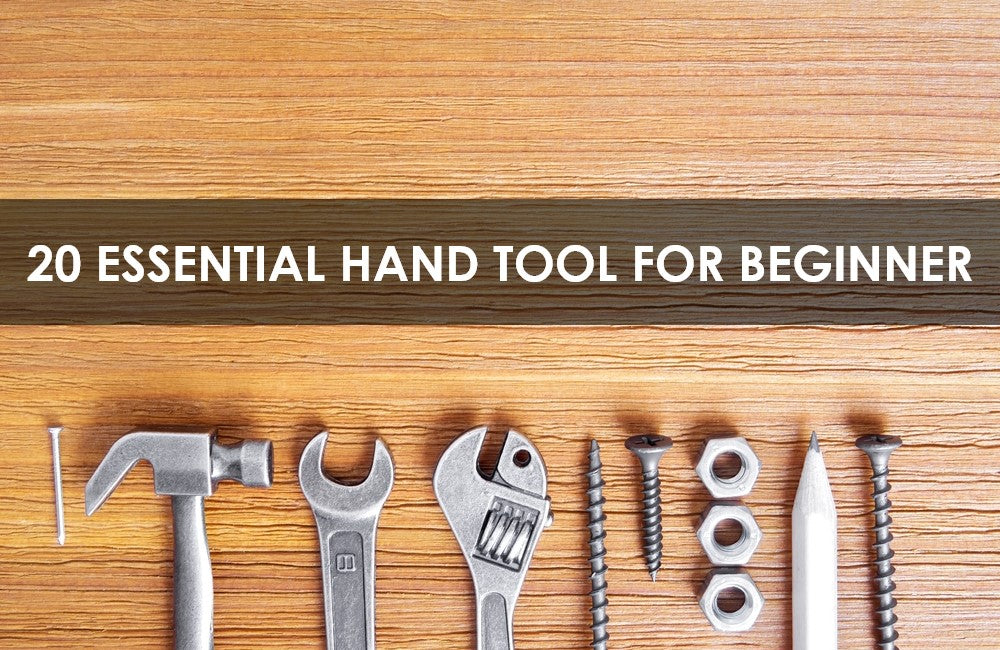Hand tools are an integral part of many professions, particularly woodworking. Like any other instrument, these tools require routine care to sustain their performance and longevity. This guide comprises nine professional tips for preserving your woodworking hand tools, ensuring their optimal operation and durability.
Hand tools are the lifeline of every craftsman, especially in woodworking. Their frequent use necessitates regular and proper maintenance. This not only extends their lifespan but also keeps your work efficient and safe. Essential care includes routine cleaning and lubrication, critical to keep these tools in peak condition. If overlooked, the accumulation of dust and debris could lead to rusting or eventual breakdown. Regular oiling of moving parts also minimizes premature wear or damage due to friction.

1.Employ Appropriate Tools for Specific Tasks
To optimize their utility and avoid damages, always use the right tool for the right job. For instance, a hammer isn't suitable for cutting wood nor a saw for driving screws. Always ensure to use screwdrivers in risk-free areas to avoid slippage and resulting damages. If needed, use wrenches or pliers for loosening components instead.
2.Prevent Rust Formation
Rust prevention is critical in maintaining your tools. Keep them dry and clean at all times. If they inadvertently get wet during work, disinfect and wipe them dry before storage. For tools exposed to moisture for extended periods, clean thoroughly before storing to prevent internal corrosion.
3.Regularly Sharpen Your Tools
Maintaining sharp tools is not only necessary for precise work but also a safety measure. Dull blades increase the chances of slipping, causing injuries or damaging the work environment. Moreover, a sharp tool offers better control, allowing clean and accurate cuts.
4.Handle Maintenance
The handle is a vital component of a woodworking hand tool and needs proper care. Keep it clean and well-lubricated to withstand extensive use. Before applying any finish or oil, scrape any loose material from the handle using a scraper or sandpaper. Apply paste wax with cotton rags to prevent oxidation and moisture buildup, avoiding potential warping or cracking.
5.Disassemble and Clean Tools After Use
Upon completion of a task, disassemble and clean your tools. Use a rag or paper towel to remove excess sawdust, and a brush to clean the teeth of your saws. Clean drill bits with wire brushes and rinse before storing them properly.
6.Proper Storage of Tools
Ensure your tools are stored in a dry place, preferably in a toolbox. Avoid exposure to direct sunlight or damp areas like garages or sheds, as these can lead to rust formation. Keep your tools away from corrosive substances such as bleach and ammonia-based cleaners.
7.Monthly Oiling of Wooden Tools
Regular oiling of wooden tools enhances their lifespan, preventing cracks and splinters. Depending on the type of wood, choose an appropriate oil. For hardwoods like oak and maple, linseed oil is a suitable option. Some professionals recommend applying tar or turpentine on the handles for extra moisture and bacteria protection.
8.Routine Tool Inspection
Regularly inspect your tools before and after use. Check for any loose parts, handle cracks, rust, wear and tear, or missing parts that need replacement.
9.Adhere to Safety Protocols
Safety should always be a priority when using hand tools. Even skilled craftsmen are not immune to accidents. Wearing gloves can significantly reduce the risk of slippage and offer a better grip on the tool. Additionally, they shield your hands from cuts and abrasions. Prioritize safety precautions to avoid potential accidents and injuries.
Conclusion
With this guide at your disposal, we hope you're ready to embrace a proactive approach to tool maintenance. The better your understanding of tool maintenance, the more proficient you'll become in sharpening, cleaning, and preserving them after use. This meticulous care ensures your hand tools remain in peak condition, enhancing your woodworking experience.



